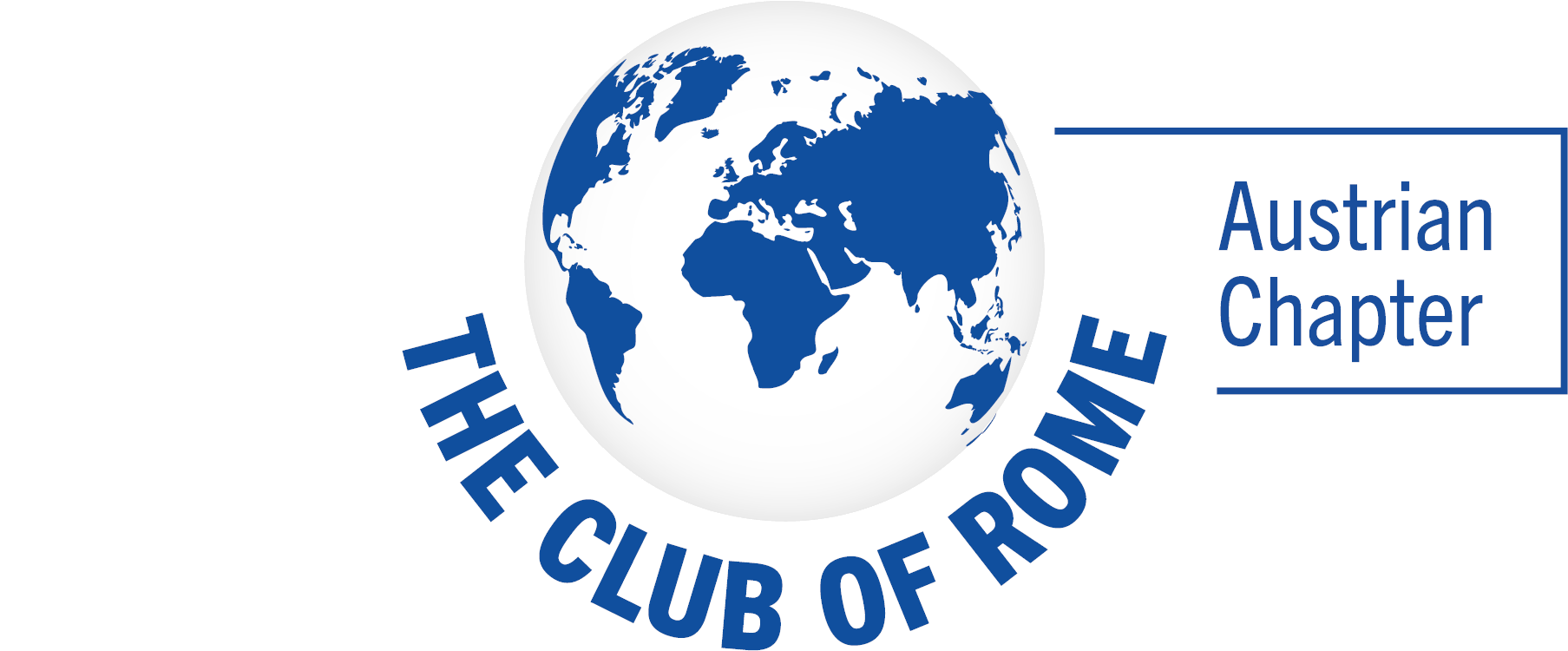((( For recent news see below)))
An “improvement of the world” in terms of ecological, social, and economic sustainability can and will only happen if each individual has the feeling and awareness to improve their own situation and at the same time “no one is left behind”. Recently, the Covid 19 pandemic and the war in Europe have further worsened the psychological situation of many people.
Wellbeing, life satisfaction is therefore the order of the day!
At the same time, respecting planetary boundaries requires a reduction of resource consumption, especially but not only fossil fuels, to 10-20% of today’s consumption in a few decades. The economic system should enable a high quality of life while respecting planetary boundaries and minimum social conditions in a sustainable way (schematic diagram below), regardless of whether the economy grows in monetary terms or not.
Since 2021, we in the Austrian Chapter of the Club of Rome have been working together with the UniNEtZ project at the University of Applied Arts Vienna and the University of Salzburg on a project that is now called
Wellbeing – a good life for all in a world full of crises
as part of the UniNEtZ-focus „Monitoring of Progress beyond GDP“ (lead: University of Salzburg).
The Challenge
For more than 50 years, science and civil society have been working out and publishing proposals on how the good life can be achieved within these limits. In many places, pioneering pilot projects have emerged that show how it can be done. And politics has been following very hesitantly for some years now. Transformation towards sustainability, however, means changes at all levels, so that eventually the system changes – and consistently for the better! Scientists have also shown this time and again since the publication of the Club of Rome report on the “Limits to Growth” in 1972.
Leave no one behind! is a central demand of the UN’s 2030 Agenda – which can be seen as the current concretization of the idea of “sustainability” to which the world’s states committed themselves in 2015 with their 17 global development goals (SDGs). Two of these goals explicitly refer to climate change (13) and biodiversity (15). In order to improve the quality of life for all, the other goals must also be achieved: poverty reduction (1), health (3), education (4), work and growth (8) to peace (16). This includes resilience and adaptation to the inevitable, as well as avoiding further deepening of the crises mentioned. >> more
Background and Concept
In order for all people on earth to be able to live well in the future, it is necessary to set goals at the individual, national and global levels that describe qualitatively and quantitatively what kind of future we want. and from this to develop positive images and stories of the future at all levels (from the individual to the world as a whole). >> more
Methods
The methodology of participatory indicator development within the framework of 4 workshops involving scientists, artists, and stakeholders ensures a systemic view of the challenges of a country, region, sector, or company within the comprehensive framework of the global Sustainable Development Goals (SDGs) and allows actors to start from the systemically informed individual and collective visions of the future. >> more
Implementation
The aim is to develop a systemic understanding of the challenges facing the 2030 Agenda in a series of workshops in a region or country, with a group of companies or in a sector.
- develop a systemic understanding of the challenges of the 2030 Agenda
- on this basis, personal and common goals for all three dimensions of sustainability (ecological, economic, social in the sense of the Doughnut economy) are to be formulated in the form of images and layers and
- quantified (key indicators) and
- the images and stories found are publicly presented and discussed together with the key indicators. >> more
The Process
Several processes are planned, in which initially 3 regions, 30 medium-sized and 300 small enterprises or organizations, as well as 3000 people, will be accompanied on this path. The actors can focus on a specific goal, such as poverty reduction, gender equality, climate change, circular economy, or full employment. >> more
The Report
This is to become a report to the Club of Rome by 2024 in order to make a concrete contribution to the international Club of Rome‘s Earth4All initiative: accelerating the systemic change we need for a good life in a just future on a finite planet. >> more
Indicators
The image of a doughnut economy formulated by Kate Raworth describes a society and economy that enables a good life for all within the planetary boundaries set by nature but also within social boundaries. Beyond the SDGs, further (especially qualitative) goals should also be considered, which should also relate to people’s inner well-being.
In 2020/21, the UniNEtZ project created a conceptual framework on how to measure progress towards sustainability (“beyond GDP”) (Hinterberger and Spittler 2021 – see the figure/still to be translated). >> more

Figure: Own illustration based on the doughnut according to Raworth 2017. Source: Hinterberger/Spittler (2021) based on https://www.kateraworth.com/doughnut/. Graphic: Gerda Palmetshofer
Posts about Wellbeing
- Global Responsibility and Personal Freedoms
 When discussing climate protection and social justice, both private and global dimensions come into play.
When discussing climate protection and social justice, both private and global dimensions come into play. - Meike Bukowski at “The future of social welfare policy and research” conference
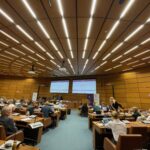 On 26.09.2024, Meike Bukowski, Turnaround Lead „Inequality“ of the Austrian Chapter’s Earth4All Austria project spoke at the 50th Anniversary of the “European Centre for Social Welfare … Read More ›
On 26.09.2024, Meike Bukowski, Turnaround Lead „Inequality“ of the Austrian Chapter’s Earth4All Austria project spoke at the 50th Anniversary of the “European Centre for Social Welfare … Read More › - No palm trees in Ausseerland!
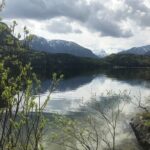 On 24 February 2023, the Kurhaus Bad Aussee hosted the kick-off of a process to guide the region towards a good life. Together with the … Read More ›
On 24 February 2023, the Kurhaus Bad Aussee hosted the kick-off of a process to guide the region towards a good life. Together with the … Read More › - What future do we see for our communities?
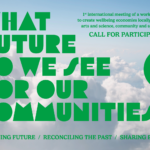 The 1st International meeting of a working group to create wellbeing economies locally.
The 1st International meeting of a working group to create wellbeing economies locally. - Systemic positive thinking
 Since September 2022, Friedrich Hinterberger, Vice President Club of Rome Austrian Chapter, has been working with other members, several Austrian universities, and the sustainability agency … Read More ›
Since September 2022, Friedrich Hinterberger, Vice President Club of Rome Austrian Chapter, has been working with other members, several Austrian universities, and the sustainability agency … Read More › - How “Wellbeing Governments” measure progress
 Let’s have a look at three possible welbeing economics: New Zealand, Scotland, and Iceland.
Let’s have a look at three possible welbeing economics: New Zealand, Scotland, and Iceland. - One World for All
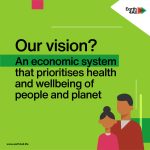 Hannes Swoboda discusses the measures of the new report to the Club of Rome and underlines their urgency for a quick implementation.
Hannes Swoboda discusses the measures of the new report to the Club of Rome and underlines their urgency for a quick implementation. - Earth4all – a mission also for us in austria
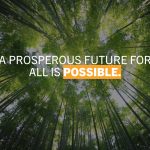 Once the new report is published, our goal is to disseminate its contents and continue to work with the insights it provides.
Once the new report is published, our goal is to disseminate its contents and continue to work with the insights it provides. - Earth for All: A Survival Guide for Humanity – Ein neuer Bericht an den Club of Rome
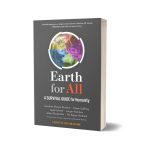 Today, another report to the Club of Rome is available in bookstores and online: a survival guide for humanity – certainly also urgently needed.
Today, another report to the Club of Rome is available in bookstores and online: a survival guide for humanity – certainly also urgently needed. - Two new Projects for Wellbeing
 in Austria an in Regions At the beginning of September 2022, two projects were launched that currently form the core of the “Wellbeing-Project “. In the … Read More ›
in Austria an in Regions At the beginning of September 2022, two projects were launched that currently form the core of the “Wellbeing-Project “. In the … Read More ›
